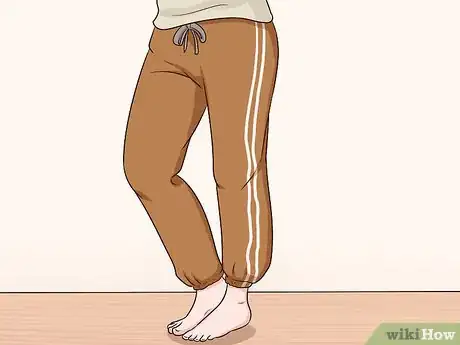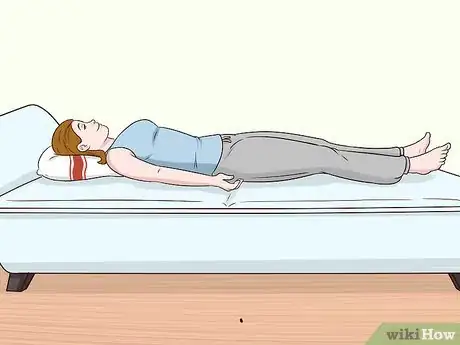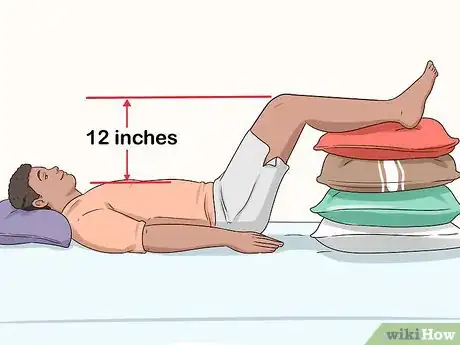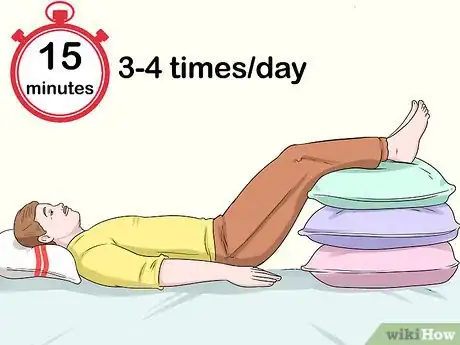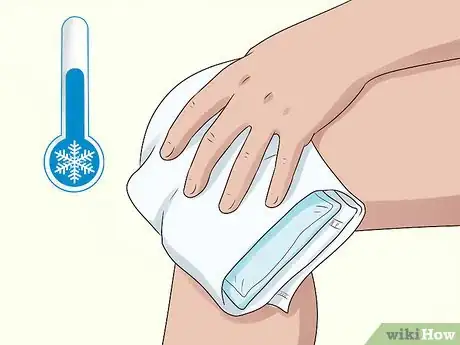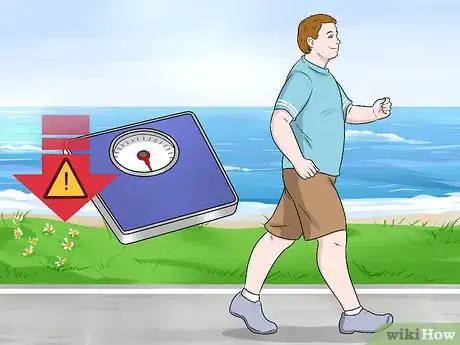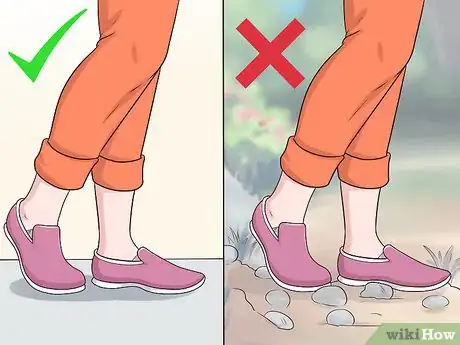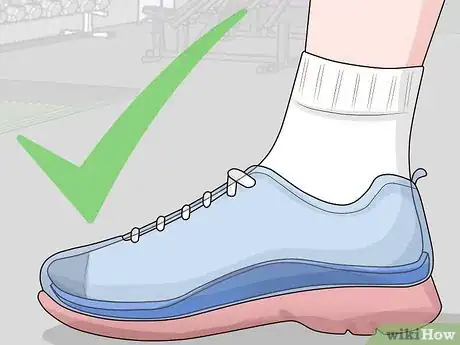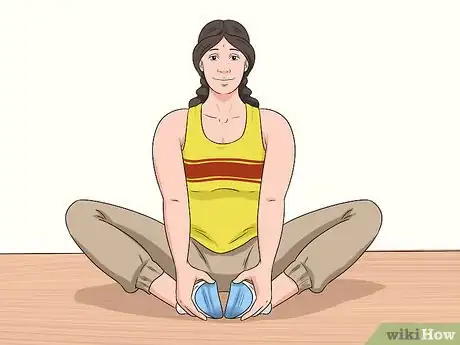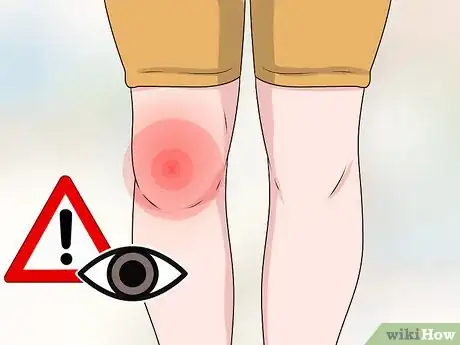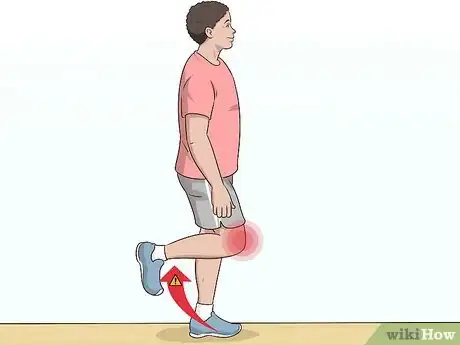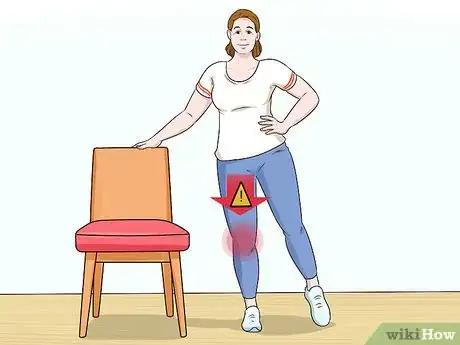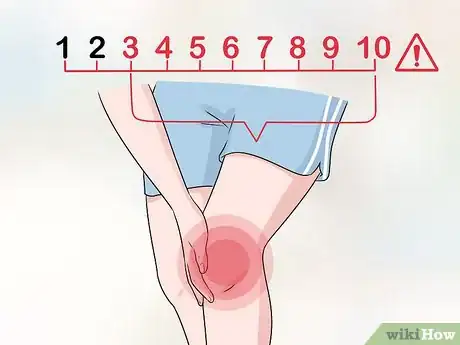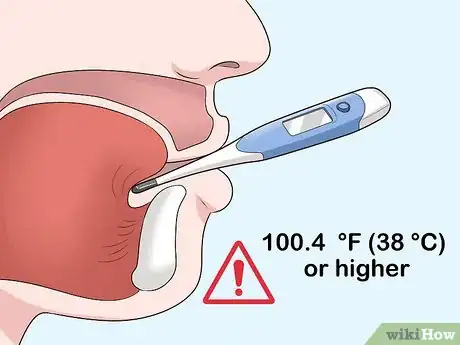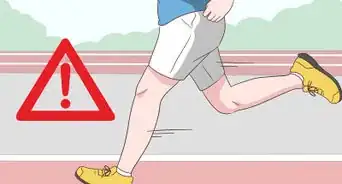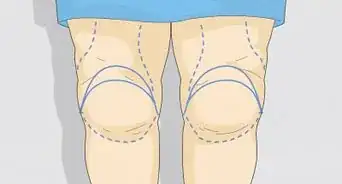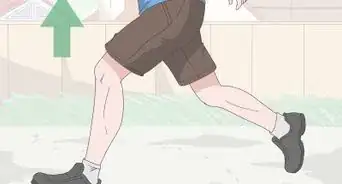This article was medically reviewed by Sarah Gehrke, RN, MS. Sarah Gehrke is a Registered Nurse and Licensed Massage Therapist in Texas. Sarah has over 10 years of experience teaching and practicing phlebotomy and intravenous (IV) therapy using physical, psychological, and emotional support. She received her Massage Therapist License from the Amarillo Massage Therapy Institute in 2008 and a M.S. in Nursing from the University of Phoenix in 2013.
There are 15 references cited in this article, which can be found at the bottom of the page.
wikiHow marks an article as reader-approved once it receives enough positive feedback. In this case, several readers have written to tell us that this article was helpful to them, earning it our reader-approved status.
This article has been viewed 98,862 times.
Lying back and elevating your knee can feel great, particularly if your knee is swollen. Whether you want to elevate your knee due to an injury or just to relax, doing so can decrease puffiness and discomfort. By raising and resting your knees, maintaining good knee health, and knowing when to call the doctor, you can take care of your knees for years to come.
Steps
Raising and Resting Your Knees
-
1Wear loose clothing so your knee is not restrained. Change out of any constricting garments, such as skinny jeans, before elevating your knee. Tight clothes can reduce blood flow to the area. Put on comfortable, loose fitting clothes, such as sweatpants, a skirt or athletic shorts.[1]
-
2Lie down on a couch or in bed. Lie on your back on a wide couch or in bed with plenty of room. You can place a pillow behind your head or shoulders to make yourself more comfortable, if you like. Make sure to have some propping pillows for your knee within arm’s reach.[2]
- Avoid lying flat on your back if you are more than 3 months pregnant. Lying flat late in pregnancy can cause your uterus to compress a major artery in your body, which can decrease circulation. Place a few pillows behind your back and shoulders so you’re propped up at a 45-degree angle instead.[3]
Advertisement -
3Prop your knee so it is at least 12 inches above your heart. Place a few pillows underneath your heel and calf to raise your knee until it is about 12 inches (30 cm) above your heart. Avoid putting pillows directly underneath the knee, which can apply pressure to any swelling and limit your range of motion. Use as many pillows as necessary to achieve the right elevation.[4]
- It may be helpful to have a partner or friend place the pillows for you. This way you don’t have to exert yourself if you’re in any pain.
- If you don’t feel confident about arranging your own pillows or don’t have enough to achieve the right elevation, many online retailers sell special knee-elevation pillows to hold your leg at just the right angle. Especially if you are injured or having trouble arranging multiple pillows yourself, this might be a good alternative.
-
4Keep a 45-degree angle between your thigh and the couch or bed. After arranging the pillows, check the angle between your thigh and the surface you are lying on. A 45-degree angle—halfway between lying flat and having your legs vertical—is best for good blood flow.[5]
-
5Repeat the process several times daily. Rest and elevate your knees 3 to 4 times a day for 15 minutes at a time. Use your elevations as a moment to relax, check your email, or watch a show. Elevating your knee for this amount of time will help increase blood flow and reduce any pain. It is not helpful to do elevations for a longer period of time, unless your doctor tells you to do so.[6]
-
6Apply ice to relieve any discomfort. Use an ice pack wrapped in a tea towel to ice your elevated knee for up to ten minutes at a time. Don’t ice more frequently than once an hour, though.[7] Icing can reduce puffiness and ease any pain you’re experiencing. To protect yourself, always use a barrier, such as a towel or T-shirt, between the ice and your bare skin.[8]
- If your pain makes you want to ice the knee more frequently, schedule a checkup with your doctor to rule out a more serious knee injury.
Maintaining Good Knee Health
-
1Lose any extra weight if necessary. Maintaining a healthy body weight through diet and exercise will take excess pressure off your knees as you go about your life.[9] Strive to workout for 30 minutes a day 4-5 days a week for good health. This will help you kick start weight loss and increase circulation to the knee.[10]
- Your doctor can advise you on a healthy weight range for your height.
- Start any new exercise routine gradually so your body can get used to that level of activity. For example, if you’re sedentary, try walking once or twice a week for 15 minutes to start.
-
2Walk on flat rather than uneven surfaces. Uneven surfaces, such as grass or gravel, can place unequal pressure on the different parts of your knee. Over time, this can cause joint pain and swelling. If you like to jog or walk outside, look for level pavement or a finished track, where the surface will be gentler on your joints.
-
3Modify how you do squats and lunges. Squats and lunges can put lots of pressure on your knee joints, particularly if you do them frequently. If you want to perform squats and lunges in a knee-sensitive way, don’t bend your knees beyond a 90-degree angle. When squatting, focus on your hips sitting back first to engage the abdominal muscles and to help maintain a center of gravity.[11]
- It can also help to hold the squat or lunge as a static exercise rather than a moving one.[12]
-
4Choose low-impact exercises when possible. Swap high-impact exercises, such as running and plyometrics, for ones that are easier on your knees, such as swimming and cycling. This will reduce knee pressure and pain related to your feet striking the ground.
- If you like to cycle, make sure your bike seat is high enough. Your knee should extend completely straight when the pedal is at its lowest point.
-
5Wear shoes with cushioning for exercise. Thick-soled sneakers can provide your knees with some much needed cushion for running and jumping when you exercise. You can also buy gel inserts for added comfort.[13] If your feet roll inward when you walk, look for a shoe with arch support to keep knee pain in check.[14]
- Many sneaker stores can measure your feet and fit you appropriately for athletic shoes. Tell the fitting assistant what kinds of activities you like to do when you exercise, and they can direct you to shoes that would be the best fit for your lifestyle.
-
6Stretch before exercising. Focus on stretching your calves, quads, and hamstrings well before being active. These muscles take pressure off your knees and kneecaps as you move. Building additional flexibility in your hips can relieve pressure from your knees, too. While no one loves stretching, you’ll increase your pain tolerance by limbering up before exercise.
-
7Work on your posture. Center your head over your shoulders and your shoulders over your pelvis when you walk around during the day. Slouching forward while walking forces your knees to compensate, which can cause pain and swelling. Try to be conscious of your posture both as you exercise and as you go about your daily routine.[17]
- Building your core muscle strength through plank exercises, yoga and Pilates are great ways to improve your posture. This will lessen extra pressure on your knees.[18]
Knowing When to Contact a Doctor
-
1Look to see if the knee appears abnormal. Use your eyes and fingers to examine the skin covering the knee. Is the skin red or hot to the touch? Also look for any bulging areas of excessive swelling. These changes are not typical of swelling you should address at home. Call your doctor to get the knee checked out.[19]
- Red, warm skin can be a sign of infection.
-
2Test for limited mobility. Standing up, bend your knee gently through its normal range of motion. If you cannot fully bend or flex the knee, or doing so causes you pain, you should call your doctor for an examination.[20]
-
3Try to bear weight on the knee gently. Holding onto a chair for support, gently bear a little weight by standing on the leg with the swollen knee. If it’s too painful to do or you feel your knee cannot support your weight, sit down right away. Call your doctor, who can advise if you should go to your local urgent care facility.[21]
-
4Gauge your pain. Close your eyes and focus on your pain level. While some mild discomfort is to be expected with swelling, if your pain registers as more than a 3 on a scale of 1 to 10, it may imply a more serious injury. Make an appointment with your doctor to have the knee examined.[22]
-
5Check for a fever. Place a thermometer underneath your tongue to check your temperature. If the final reading is 100.4 degrees F (38 degrees C) or higher, you have a fever, which could be a sign of infection. You should make an appointment to rule out anything more serious than routine knee swelling.[23]
References
- ↑ https://my.clevelandclinic.org/health/articles/coping-with-the-physical-changes-and-discomforts-of-pregnancy
- ↑ https://www.ucsfhealth.org/education/after_acl_surgery/
- ↑ https://www.whattoexpect.com/pregnancy/sleep-solutions/pregnancy-sleep-positions/
- ↑ https://www.ucsfhealth.org/education/after_acl_surgery/
- ↑ https://www.ucsfhealth.org/education/after_acl_surgery/
- ↑ http://www.ucdmc.ucdavis.edu/vascular/diseases/deep_vein_thrombosis.html
- ↑ http://www.active.com/articles/how-to-ice-an-injury-properly
- ↑ http://www.webmd.com/first-aid/tc/rest-ice-compression-and-elevation-rice-topic-overview
- ↑ http://www.health.com/health/gallery/0,,20600281,00.html
- ↑ http://www.self.com/story/heres-what-a-perfect-week-of-working-out-looks-like
- ↑ https://squatuniversity.com/2016/01/29/can-the-knees-go-over-the-toes-debunking-squat-myths/
- ↑ http://www.self.com/story/the-one-exercise-to-do-if-lunges-hurt-your-knees
- ↑ http://www.webmd.com/skin-problems-and-treatments/healthy-feet-tips#1
- ↑ http://www.active.com/walking/articles/6-ways-to-keep-your-knees-pain-free
- ↑ https://www.rush.edu/health-wellness/discover-health/preventing-knee-pain
- ↑ https://www.rush.edu/health-wellness/discover-health/preventing-knee-pain
- ↑ https://www.rush.edu/health-wellness/discover-health/preventing-knee-pain
- ↑ https://www.rush.edu/health-wellness/discover-health/preventing-knee-pain
- ↑ https://www.arthritis-health.com/types/general/how-care-swollen-knee
- ↑ https://www.arthritis-health.com/types/general/how-care-swollen-knee
- ↑ https://www.arthritis-health.com/types/general/how-care-swollen-knee
- ↑ https://www.arthritis-health.com/types/general/how-care-swollen-knee
- ↑ https://www.arthritis-health.com/types/general/how-care-swollen-knee
- ↑ https://www.arthritis-health.com/types/general/how-care-swollen-knee
- ↑ http://www.active.com/walking/articles/6-ways-to-keep-your-knees-pain-free
About This Article
If your knee is swollen or injured, you’ll want to elevate it to reduce inflammation and discomfort. All you need to do is lie down on a couch or bed and prop your knee about 12 inches above your heart. Place a few pillows or cushions under your calf. Don’t put them directly under you knee, since this can apply more pressure. Aim to keep your thigh at a 45-degree angle to your body. Elevate your knee 3 or 4 times a day for 15 minutes at a time until it feels better. You should also wear loose and comfortable pants to avoid putting any extra pressure on your leg. For more tips from our Medical co-author, including how to apply an ice pack to relieve your knee pain, read on!
